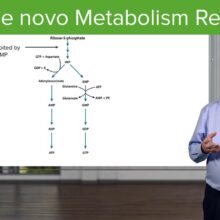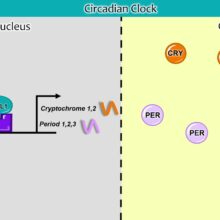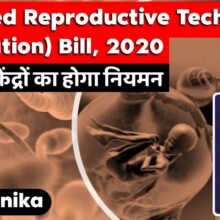Hypertension | Hypotension | Blood Pressure Regulation
#HyperTension #Hypotension #BloodPressureRegulation
1. Normal Systolic and Diastolic Blood Pressures (0:00-0:39)
2. Systolic (SBP) and Diastolic Blood Pressure (DBP); relationship with Cardiac Output (CO) and Total Peripheral Resistance (TPR) respectively. (0:40-1:43)
3. SBP’s direct proportionality with CO. (1:44-6:06)
4. Defining DBP. (6:07-8:57)
5. DBP’s direct proportionality with TPR. (8:58-11:10)
6. Effect of arterioloconstrictors and arteriolodilators on TPR and by extension DBP. Altering SBP by controlling CO. (11:11-13:10)
7. Explanation and calculation of Mean Arterial Pressure (MAP); Mean Systemic Blood Pressure (13:20-22:25)
8. Cardiac Output (CO) = Stroke Volume and Heart Rate. Factors influencing Stroke Volume (e.g. Preload, Contractility, Afterload. (23:18-28:47)
9. Venous Return; Preload, factors influencing it i.e. Ventricular Filling Pressure, Filling Time. (28:48-33:17)
10. Contractility and Afterload and how they affect Preload. (33:18-35:45)
11. Total Peripheral Resistance (TPR); contribution to Blood Pressure through changes in DBP; concepts of stressed and unstressed volumes and effect of vasodilation/arteriolodilation and Venoconstriction/Arterioloconstriction. (35:47-40:30)
12. M.A.P = CO into TPR; Cardiac Output and Total Peripheral Resistance as interdependent variables (and not independent) ; i.e. if one increases the other decreases and vice versa. (40:36-42:58)
13. Short term (Rapid) and Long term regulation of BP; i.e. Neurological and Renin-Angiotensin-Aldosterone system. (43:00-46:09)
14. Detailed explanation of Neurological Regulation; how it counterbalances major fluctuations; Baroreceptors, Carotid Sinus and Aortic Arch Sinus; Role of Glossopharyngeal (9th Nerve) and Vagus Nerve (10th Nerve), central regulation in Medulla through sympathetic and parasympathetic outflow tracts acting on SA node and Vasomotor center acting on veins and arteries. (46:30-1:15:00)
15. Effect of Hypertension on sensitivity of nerve endings in Carotid Sinus Arch and S.A node and clinical implications of this phenomena. (1:15:05-1:17:14)
16. Summary of neuronal blood pressure regulation and rapid control of blood pressure with emphasis on Parasympathetic and Sympathetic activity through afferent and efferent neurons. (1:17:24-1:19:30)
17. Neuronal Blood Pressure Regulation (NBPR); Clinical co-relates; Carotid Occlusion, Carotid Sinus Massage, its importance in managing Supraventricular Tachycardias (SVT). (1:19:33-1:24:50)
18. NBPR; Clinical co-relates; Postural changes in blood pressure, Orthostatic Hypotension, severe dehydration, use of sympatholytic or vasodilator drugs and compensatory rise in Sympathetic Nervous System (SANS) activity leading to rise in blood pressure. (1:24:50-1:34:35)
19. NBPR; Clinical Co-relate; Volume load, compensatory rise in Parasympathetic Nervous System Activity (PANS) leading to fall in blood pressure. (1:34:40-1:36:15)
20. Renin-Angiotensin-Aldosterone System (RAA); Production/release of Renin; Effect of increased or decreased renal perfusion on JuxtaGlomerular Apparatus (JG apparatus). Its role in increased reabsorption of Na+ in convoluted tubules and Loop of Henle. Decreased Na+ detection by JG apparatus leading to compensatory release of Renin. (1:36:17-1:51:34)
21. RAA system: Increased Renin release in blood stream leading to release of Angiotensin-1 from the liver. Conversion of AT-1 to AT-2 by the enzyme Angiotensin-Conversion-Enzyme (ACE) present in cells of the lung. (1:51:37-1:56:34)
22. RAA system: Role of AT-2 in increasing SBP and DBP through venoconstriction and arterioloconstriction respectively. AT-2’s role in activating thirst center in hypothalamus. AT-2’s role in activating sympathetic activity through receptors in post-ganglionic nerve fibers. (1:56:36-2:05:26)
23. RAA system: AT-2’s effect on Adrenal Gland in producing Aldosterone. Detailed mechanism of Aldosterone’s action on DCT to increase reabsorption of Na+ and H2O (salt-water retention) and thus increased blood volume. (2:05:30-2:17:40)
24. RAA system: AT-2’s effect in enhancing Na+ and H2O reabsorption through its action on Na+-H+ counter transporter and significance of Carbonic Anhydrase enzyme in this regard. AT’s role in maintaining GFR through constriction of efferent arterioles. (2:17:41-2:25:10)
25. Drugs acting through RAA system: ACE inhibitors; Renal Artery Stenosis. (2:25:22-2:31:55)
26. Drugs affecting RAA system: Angiotensin-Receptor Blockers (ARBs). (2:31:57-2:37:08)
27. Other Blood Pressure regulatory mechanisms; chemoreceptors; Central and peripheral types of chemoreceptors. (2:37:10-2:42:24)
28. Cushing’s reaction, its clinical co-relates; Increased Intracerebral Pressure (ICP) in cases of Space Occupying Lesion (SOL). Increased Cerebral Blood Flow, progressively increasing BP and progressively decreasing Pulse. Papilledema. (2:42:25-2:56:02)
29. Other mechanisms: Anti-diuretic hormone (ADH)/Vasopressor hormone. (2:52:08-2:55:59)
[ad_2]
Source link





Thanks sir.
thank you very much sir it was such great help sir ,more than you ever think sir
Well Explained! I Loved it!
Superb
God bless you sir
Best lecture sir❤️
Wow sir..ur genius 👏
way of teaching is excellent,u r amazing sir,ur teaching passion remarkable,u r real humble and gental person,may God bless u sir.
The Best Teacher. 👌🏼
Excellent and outstanding information to us. Thanks a lot sir for your support to learn us.
Sir as salmu alaikum love from
India
Currently doing my MBBS sir
Please create a video playlist from 1st year to 5th year for the.. medical student and I will be the first person to buy that course.
Jazakallah khair.
🙏
Wonderful keep serving humanity! May Allah elevate your rank and increase your knowledge even more.
thx sir
Thanks for video keep going 🤠 greeting from Morocco©
Great class sir, thank you.
You r really a great teacher ❤ sir , thank you so much sir 🙏
There is no comparison of Dr najeeb
Thank you so very much Respected sir 💐🙏🏻😊 You clearly make the point to the point and make it worth learning. So blessed to have you 😊 thank you for sharing
i am a phd in Propulsion and fluid mechanics from 1991. i did not take biology seriously in 12th std. now i am addicted to this lecture because of Dr Najeeb sir teaching………………………great one.
Thanku soooo much sir..ur lectures are amazing ❤️❤️❤️
SOME PEOPLE ARE JYST NATURAL TEACHERS!!!!!! Thank You Dr.!!!! Complete understanding!!! Wow!!!!😀
Amazing teaching sir, please provide some videos lectures on systemic surgery topics too.
Hi sir Iam from kerala, you are amazing amazing amazing 🥰🥰🥰🥰🥰sir can u please try biochemistry tooo😇😇
Sir please do vedioes on cardiovascular regulations sir.
Your lectures so amazing sir we can understand the concept nicely. Thank 🙏 u very much sir for your great and precious lectures
finally I understand the RAA system
thank you very much for your precious lecture Dr.Najeeb
Mind blowing sir 💜
❤️❤️❤️
Dear sir, your the best. Thank you so much. Your lectures have helped me to understand the subject so so well.
Superb way of teaching.. Thank you so much Sir ❤️❤️May Allah bless you with a long healthy life.